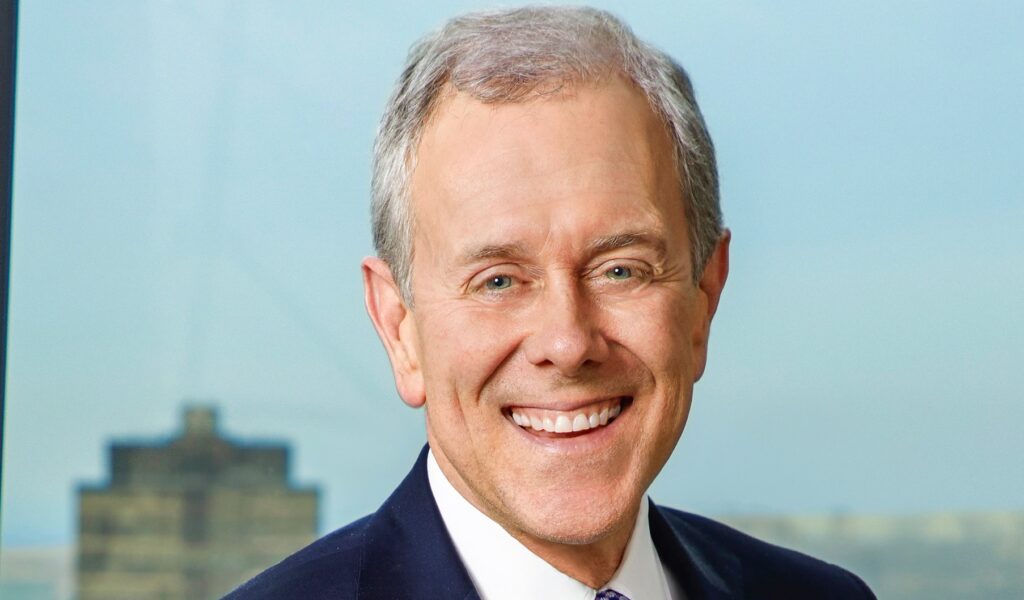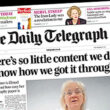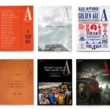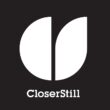Steve Swartz is CEO and President of Hearst, one of the world’s oldest and largest diversified media companies. He is a former financial journalist who had joined the Wall Street Journal after graduating in politics from Harvard. He was founding editor (and, later, CEO) of the former SmartMoney magazine (jointly owned by Dow Jones and Hearst). He subsequently became CEO of Hearst Newspapers and chief operating officer before being appointed in 2013 to succeed 30-year Hearst CEO Frank Bennack (who is now deputy chairman).
The family-owned, $12bn-revenue Hearst was founded by W. Randolph Hearst (inspiration for the monstrous movie character Citizen Kane). In 1887, Hearst had taken over the struggling San Francisco Examiner which his mining and farming magnate father had acquired in lieu of a gambling debt. Seventeen years later, he burst into magazines with the launch of Motor and the acquisition of Cosmopolitan (then a general-interest magazine), Good Housekeeping, Town & Country, House Beautiful, and Harper’s Bazaar. He pioneered cinema newsreels and, in 1919, founded Cosmopolitan Pictures, in New York. He also established his own brand of sensational “yellow journalism”, wrote major opinion pieces and boasted that his newspapers “made” the news not just reported it. By 1930, he owned 28 newspapers, 13 magazines and eight radio stations. Randolph Hearst died in 1951, leaving ownership of what was, arguably, the world’s first media group to his family trust, but under the day-to-day control of non-family executives.
Hearst Corp’s consistent success can be gauged by the fact that, during the past 25 years of digital turmoil, it has more than doubled revenue and remained strongly profitable with increasingly ambitious acquisitions funded by cash reserves not borrowing. Its biggest profitmakers have shifted successively from newspapers to magazines, TV and business information. The company is deeply immersed in TV through Cable (principally deals with Disney comprising a 20% share of ESPN and 50% of the A&E, History and Lifetime channels) and 35 wholly-owned local broadcasting stations. The combination of cable investments and wholly-owned stations make TV Hearst’s most profitable category. But its largest wholly-owned (and most profitable) business is the Fitch bond ratings group. It also has fast-growing data-analytics companies in healthcare and transportation (aviation and automotive).
Hearst generates its profit from seven media categories:
- Fitch Group
- Cable TV
- Local TV
- Health data
- Transportation data
- Magazines
- Newspapers
It also operates the 30-year-old Hearst Ventures which has invested more than $1bn mainly in tech startups around the world.
As a private company, Hearst’s financials are elusive, although executives say that consumer media (TV, newspapers and magazines) generate slightly more profit and even more revenue than B2B. But the fact that the Disney-managed cable TV investments comprise the company’s second largest profitmaker explains the concentration of Hearst’s day-to-day management on their wholly-owned B2B, which now accounts for about 45% of profits. It was less than 10% a decade ago. We assume that the c$2.5bn-revenue Fitch (which Hearst acquired for a total of $6bn during 2006-18) accounts for some 20% of revenue but perhaps 35% of profit. Magazines and newspapers, which once dominated the company, may now account together for 10-15% of profits.
It’s a big change from the 1970s when a single magazine, Helen Gurley Brown’s legendary Cosmopolitan, generated two-thirds of all Hearst profit. The company has continued to acquire local newspaper groups (it publishes 24 dailies and 52 weeklies). But the signs are that its magazines business (focused on the US with a wholly-owned UK subsidiary, and licensed editions and JVs around the world) is seeking rehabilitation by ramping up eCommerce, building membership schemes and de-emphasising print. Its Japan edition of Elle is said to generate almost one-third of its revenue from a eCommerce “shop” It has inspired lookalike plans in the US, set for later this year, starting with Men’s Health. Direct eCommerce (as opposed to affiliate sales through Amazon et al) are becoming a real priority for Hearst Magazines.
Although the unmistakeable pivot towards B2B owes its origins (like so much in Hearst’s 21st century portfolio) to Frank Bennack’s initial investment in Fitch, Swartz has been all over the expansion in business information. It’s quite a shift from 2006 when Bennack presided over the opening of New York’s landmark Hearst Tower by saying it had effectively been paid-for by Helen Gurley Brown whose brilliant editorship had transformed the whole company’s fortunes in the 1960s. Significantly, the fine building was paid for with cash not debt.
In his annual letter to Hearst employees, the CEO reviewed 2023 highlights: “Our Transportation group led the way with double-digit profit growth. Three of our fastest growing companies last year came from Transportation: FlightBridge, a business majority-owned by our CAMP aviation company, is a software platform that helps flight crews and passengers arrange hotel rooms, rental cars and other services; Noregon Systems, a data and software company that helps mechanics diagnose and fix repair needs of big trucks; and MOTOR, a Hearst business for over 120 years, which has evolved over that time from a consumer magazine to a data and software business serving the car repair, car parts and auto insurance industries.”
It’s been a memorable first decade for Steve Swartz as CEO.

How would you describe Hearst?
We’re 137 years old. Our first media product, was a newspaper, the San Francisco Examiner, in 1887. But I would also say that it was a vital source of news, information and entertainment for the community. And, 137 years later, we have broadened what it means to be a news, information and entertainment business. But we have stuck broadly to those three main areas. We are a vital provider of news, we provide all kinds of information, data and, and increasingly, software to help companies or medical institutions or whatever, manage that software. And, of course, we are still a very important source of entertainment. We have a very strong mission that started with the founder and what it means to be a journalist and serve the communities.
Is it ironic that the founder of one of the most collegiate and admired media companies was William Randolph Hearst, a very polarising figure in the early twentieth century?
What the founder gave the company was its mission. His father, Senator Hearst, was one of the great miners of the Western migration in the US. So William Randolph Hearst did not have to work. But he had this sense of wanting to do something productive with his life, wanting to serve and taking over a newspaper that his father had come to own. It is that mission of journalism that continues in Hearst today and really impacts every area of the company. You look at the mission of Fitch to look at the relative safety of bonds. Well, who buys bonds? Pension funds, retirees, and university endowments. You look at our health businesses that have the mission of making healthcare more effective and more efficient. That sense of mission carries over from the founder’s decision to move into the newspaper business. That’s why we are here.
Have acquisitions been more important than organic development?
The whole consumer media sector, not just at Hearst, but everywhere, is in a state of constant transformation. We’re almost constantly re-making the business model, looking for long-term sustainability. This is a continuing process for most consumer media businesses. It’s change and transformation on an almost daily basis, rather than some big victory. But it’s real innovation, nonetheless. I would say that most of our businesses have been very good at creating new products. Many are not necessarily massive in themselves but it’s what our success is all about. In some ways, it’s the same in our B2B companies where we don’t necessarily look at the company that way. But our healthcare and transportation businesses are constantly adding new features and new products. So that’s a big focus. And we’re constantly asking our consumer businesses what what can they learn from from that kind of organic approach in B2B.
What is the primary focus of your B2B strategy?
Our focus has been on the data and software that is vital to the day-to-day business of the customer. We try to buy companies that generate this vital data because that is what protects you in downturns: having information the client absolutely needs and cannot do without. That’s where our focus has been. We’re unquestionably in great B2B sectors that are very important to the global economy. But we do constantly ask ourselves whether we have diversified enough or whether we should consider other B2B sectors. We will keep considering our options but we also keep getting the opportunity to make bolt-on acquisitions in our existing sectors and have lots of scope for new products. So far, therefore, we have not seen the need to go into new B2B sectors. But we would never say ‘never’. One of the features of Hearst is that we always have a strong sense of pragmatism. In some ways, it’s our USP. We’re always open to opportunities.
Will Hearst become more international?
Although we started in some uniquely local businesses like newspapers and TV, we do have an international magazine company. But some of our businesses, like ESPN, are increasingly international – although they have been extraordinary successful in the US. But they (and our other businesses) could become bigger internationally over time.
What makes Hearst special?
I think it’s just the longevity of the company and our willingness to try new things while rarely giving up on anything that we’ve been doing – even if that business is hitting a tough patch. If we think we’ve been good at it, we’re going to stay at it. Our very strong balance sheet also gives us patience with some of the businesses that need more investment and more time to adapt to a changed environment. Again, this sense of mission and evolution is key to Hearst which, after all, started with one newspaper and evolved into this highly successful company.
Is Hearst Ventures’ activity primarily for investment, or for learning about other businesses, or for getting to know companies you might want to own?
All three! We have a large portfolio of investments in interesting and exciting businesses and we also have ‘adventures’ with a more defined mission. We started Hearst Lab to incubate and mentor technology businesses started and led by women. And we also started Level Up Ventures, focused on businesses started and led by people of colour. One thing they all have in common is that we find some great entrepreneurs. They inspire us and we learn a lot from them. We bring to the financing of these ventures the same sense of mission as with our own businesses and I think a lot of our people – especially in regard to Hearst Lab and Level Up Ventures – get a great sense of fulfillment from helping to mentor these young companies. We’re very proud of them. It’s a very satisfying process and also great learning for us all.
Hearst was an early investor in BuzzFeed and Vice. What did you learn from that lossmaking experience?
Well, they are very different because the Vice investment was made by our partnership with Disney so it wasn’t part of Hearst Ventures. But BuzzFeed was. As I said, one of the things we try to do is learn. So, in in the early days of these new digital-only, free-to-the-consumer, ads-supported media businesses, our venture group was one of the first investors in BuzzFeed. It was a very small investment by our standards. We learned a lot but it’s important to say that you you can’t go into venturing if you think you’re going to have a perfect record. That’s not what our venture fund (or anyone else’s) can expect to achieve. Some things work out and some don’t.
Even Warren Buffett doesn’t have a perfect record.
If you look at our whole track record, we have invested some $12-13bn in acquisitions and we’ve been very fortunate to buy some great companies. The important thing is we’re willing to try things. We’re always learning.
Can printed magazines and newspapers survive?
I think our traditional businesses like newspapers and magazines go a long way to making Hearst a special company, as do the combination of consumer and business media. And, yes, there are advantages to being a private company, able to take a longterm, patient view of the prospects and opportunities.
But some of the print business gets increasingly challenging – depending on which sector you’re talking about. One of the things that a great local or regional newspaper can do – that most consumer magazines can’t – is command a significant price for the print and also the digital editions. I think printed newspapers still have a good run because subscribers are willing to pay that full price. But consumer magazines, particularly general interest brands, became big and powerful by having relatively modest prices and, and monetizing mostly through advertising.
Obviously, in the digital world, that’s much harder to do than in print. That’s why we think that – in consumer magazines – print can become an important part of membership. Our strongest consumer proposition is a membership scheme where the member gets daily and weekly digital content and then – depending on the magazine – they might get a printed product four or six times a year. So the print will be playing a different role, but will still be very important.
How important is eCommerce for magazines?
Well, Good Housekeeping has been in the testing and recommendation business with its reviews for over 100 years in the US and UK and that’s why we’re doing well in the digital world today. People trust the brand and the beauty of technology is that anything our editors believe is the best can be purchased by our readers digitally. So I think eCommerce can be a very strong business – if you have the credibility of Good Housekeeping. But that is just one part of our view of eCommerce. Because our magazines are trusted curators of all kinds of things that people want to purchase, we see an opportunity to build our own marketplaces, our own digital stores. Amazon, for example, is a very good partner for affiliate eCommerce but there is a real opportunity for our own retailing. We have some real experience from our Elle Shop in Japan where it’s been successful for years and that insight is helping us to launch an eCommerce initiative later this year in other markets.
What have been the milestones of your first 10 years as CEO?
It’s not all about me, of course. But I think the fact that we are still growing. We had our second best year ever last year and 2022 was a record year. I’m so proud of the fact that that we are continuing to innovate in newspapers, magazines, local and cable television, and B2B. We couldn’t be prouder of ESPN, A&E, the global credibility of Fitch and the rapid progress of our healthcare and transportation businesses. I’m so proud of our company and our great teams of people because we’re doing so many interesting things across many swathes of the global economy – and there’s so much more to come. It’s fun to come to work every day.
What’s the best advice you’ve had from Frank Bennack?
Frank is my predecessor and, of course, the man who really rebuilt Hearst for the modern age. He’s still just down the hall. I was chatting with him an hour ago. I get a lot of help from him. I seek his advice almost every day. I will only say that its been my great fortune to have someone of his unique talents as a mentor, both in business but also in how to try to live a good life and be a good person. I’ve been very fortunate.
What are the best lessons you have learned?
I think putting yourself in a position where you can have mentors, people who teach you and can help you. As I said, Frank Bennack has been my principal mentor. But, as a journalist, I got a chance to work with Norm Pearlstein, Paul Steiger and Jim Stewart at the Wall Street Journal. And John Mack Carter at Hearst helped teach me about magazines. You’ve got to put yourself in a position where others will take an interest in you and teach you what you don’t know. That’s the best way to push your career forward.




